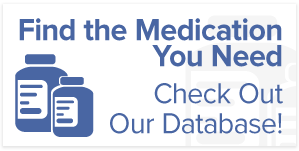What are the 7 Components of a Prescription?
Prescriptions play a crucial role in healthcare, serving as a roadmap for patients to access the right medications and treatments for their specific conditions. A well-crafted prescription not only guides pharmacists but also ensures patient safety and effective treatment.
In this blog, we will delve into the seven essential components of a prescription, shedding light on each element’s significance in the healthcare landscape, especially when it comes to prescription assistance programs.
Patient Information
The foundation of any prescription lies in accurate patient information. This includes the patient’s full name, date of birth, address, and any relevant contact details. This ensures that the medication is prescribed for the correct individual, minimizing the risk of errors and enhancing overall patient safety.
Date of Prescription
An often overlooked yet critical component is the date of the prescription. It helps establish the timeline for the medication regimen and ensures that the treatment plan is current and relevant. Pharmacists use this information to determine the validity of the prescription and dispense medications accordingly.
Prescriber’s Information
The prescriber’s details, including their full name, credentials, and contact information, are essential for accountability and communication. Patients, pharmacists, and other healthcare professionals may need to reach out to the prescriber for clarification or additional information. Clear and accurate prescriber information facilitates seamless collaboration with full-service prescription assistance programs.
Medication Name and Strength
Image file name: medicine-divider
Image alt text: weekly medicine organizer
Image caption: medication provided by prescription assistance programs
Precise identification of the prescribed medication is crucial for safe and effective treatment. The prescription should include the generic or brand name of the medication, as well as the specific strength or dosage. This information enables pharmacists to dispense the correct medication and ensures that patients receive the intended therapeutic effects.
Dosage Instructions
To guarantee patient compliance and optimal therapeutic outcomes, prescriptions must provide clear dosage instructions. This includes details on how often the medication should be taken, the quantity to be taken at each dose, and any specific administration instructions (e.g., with food or before bedtime). Clear and concise dosage instructions empower patients to follow their treatment plans accurately.
Dispensing Quantity
The quantity of medication to be dispensed is a critical component that prevents under or over-medication. The prescription should specify the amount of medication needed for the prescribed duration. This ensures that patients have an adequate supply until their next follow-up appointment, promoting continuity in their treatment.
Refill Information
Prescriptions often include information about whether refills are allowed and, if so, the number of authorized refills. This component is vital for ongoing treatment, allowing patients to obtain their medications through full-service prescription assistance programs without the need for a new prescription each time. Clear refill instructions contribute to the convenience and continuity of care.
Final Thoughts
A well-rounded prescription comprises these seven key components, forming a comprehensive guide for patients and healthcare providers alike. As part of a full-service prescription assistance program, understanding and implementing these elements contribute to the seamless and safe delivery of healthcare services.
Should you find yourself in a situation where managing your healthcare becomes challenging, don’t hesitate to reach out to Advocate My Meds. Backed by years of industry expertise, our dedicated team is ready to assist you in connecting with suitable prescription assistance programs. Feel free to get in touch with us to discover more about the range of services we provide.







